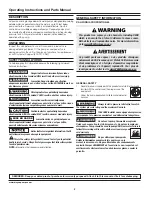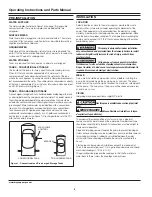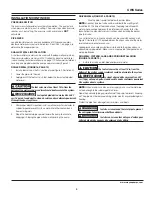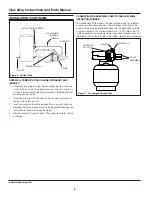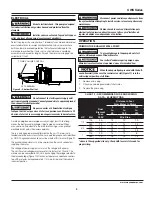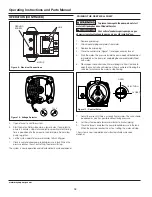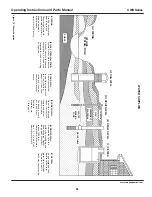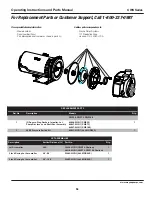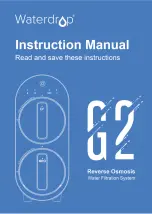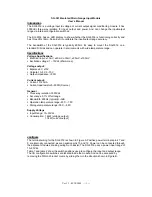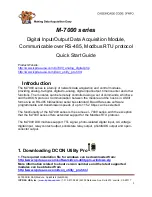
4
www.waynepumps.com
Operating Instructions and Parts Manual
PRE-INSTALLATION
WATER SUPPLIES
The water supplies illustrated in Figure 16 (on page 13) are possible
sources for water. These water supplies can be divided into two
categories:
SURFACE WATER
Water from a lake, storage tank, stream, pond and cistern. This water is
usually not fit for human consumption, but may be suitable for washing,
irrigation or other household uses.
GROUND WATER
Water found in the water bearing stratum at various levels beneath the
earth. Of all the fresh water found on earth only 3 percent is found on the
surface and 97 percent is underground.
WATER STORAGE
Tanks are required for these pumps to operate as designed.
TANKS - CONVENTIONAL STORAGE
The function of the tank is to store a quantity of water under pressure.
When full, the tank contains approximately 2/3 water and 1/3
compressed air. The compressed air forces the water out of the tank
when a faucet is opened. An air volume control automatically replaces air
lost or absorbed into the water. The usable water, or draw-down capacity,
of the tank is approximately 1/6 of the tanks total volume when operated
on a 30/50 pressure setting (Figure 1).
TANKS - PRE-CHARGED STORAGE
A pre-charged storage tank has a flexible bladder or diaphragm that acts
as a barrier between the compressed air and water. This barrier prevents
the air from being absorbed into the water and allows the water to be
acted on by compressed air at initially higher than atmospheric pressures
(pre-charged). More usable water is provided than with a conventional
type tank. Pre-charged tanks are specified in terms of a conventional
tank. For example, a 20 gallon pre-charged tank will have the same
usable water or draw-down capacity as a 40 gallon conventional tank,
but the tank is smaller in size (Figure 1). Pre-charged to be set at 28 PSI
with the tank empty of water.
Figure 1 - Conventional and Pre-charged Storage Tanks
AIR VOLUME
CONTROL
CONVENTIONAL TANK
PRE-CHARGED TANK
BLADDER
INSTALLATION
LOCATION
Select a location as close to the water supply as possible. Be sure to
comply with any state or local codes regarding the placement of the
pump. The equipment must be protected from the elements or voids
warranty. A basement or heated pump house is a good location. Make
sure the pump has proper ventilation. The temperature surrounding the
pump is not to exceed 100° F (38°C) or nuisance tripping of the motor
overload may occur.
This pump is designed for indoor installation
only, unless housed and protected from the elements. Failure to install
indoors will significantly increase the risk of injury or death from
electrical shock.
Cette pompe est conçue pour être installée à
l’intérieur sauf si elle est abritée et protégée contre les intempéries.
Ne pas l’installer à l’abri dans un local augmente considérablement le
risque de blessure ou de mort par électrocution.
WELLS
A new well should be pumped clear of sand before installing the
pump. Sand will damage the pumping parts and seal. The draw-
down level of the well should not exceed the maximum rated depth
for the pump. The capacity of the pump will be reduced and a loss
of prime may occur.
PIPING
Inlet piping may be copper, steel, or rigid PVC plastic.
Flexible pipe is prohibited on suction pipe (inlet
pipe).
MISE EN GARDE
Un tuyau flexible est interdit sur le tuyau
d’aspiration (tuyau d’entrée).
The pipe must be clean and free of rust or scale. Use a pipe joint
compound on the male threads of the metal pipe. Plumber’s seal tape
should be used with plastic threads. All connections must be air tight to
insure normal operation.
Slope all inlet piping upwards towards the pump to prevent trapping air.
Unions or hose couplings can be installed near pump to facilitate removal
for servicing or storage. A rubber hose installed between the water
system and the house piping will reduce the noise transmitted to the
house.
Plastic pipe can be used on all installations except 2 in. deep well jet.
The 2 in. deep well jet requires 1-1/4 in. galvanized steel pipe and special
machined couplings (1-13/16 in. O. D.).
The galvanized steel pipe and the couplings restrict the flow of return
water back to the jet unless the couplings are machined.


